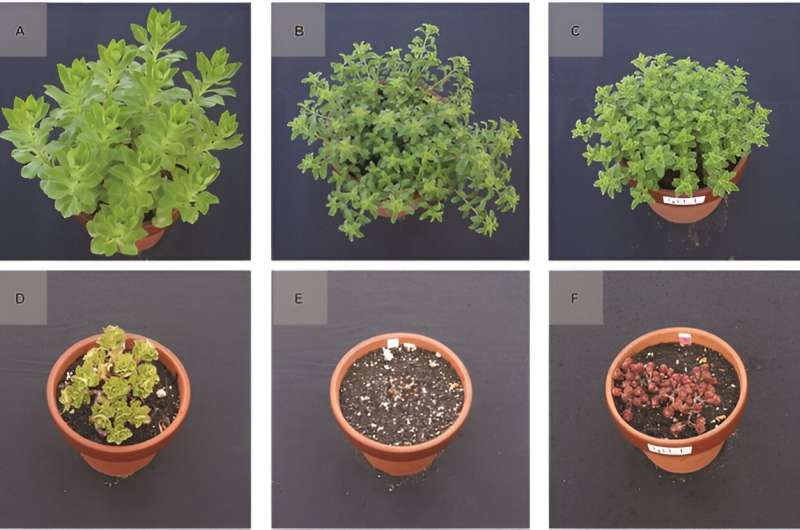This article has been reviewed according to Science X's editorial process and policies. Editors have highlighted the following attributes while ensuring the content's credibility:
fact-checked
trusted source
proofread
Multispectral imaging unlocks genetic secrets of Phedimus plants for rooftop gardening

Ornamental plants, valued for their varied morphological characteristics, are increasingly used in urban greening initiatives such as rooftop greening. But this application presents challenges like limited soil depth and no irrigation, requiring plants such as the Phedimus species, known for their resilience to these conditions.
Current research focuses on understanding the genetic and seasonal morphological changes in these plants, with a particular interest in their variations in color and patterns of dormancy. However, there is a lack of progress in genetic and breeding research, and the methods for evaluating morphological traits are still in the early stages of development. While recent advancements in multispectral image analysis provide promising solutions for non-destructively evaluating plant traits, their application in assessing ornamental plants is still limited.
In June 2023, Plant Phenomics published a research article titled "Multispectral Phenotyping and Genetic Analyses of Spring Appearance in Greening Plant, Phedimus spp.."
In this study, researchers utilized multispectral image analysis to assess the color of Phedimus spp., a critical attribute for ornamental plants, aiming to enhance breeding techniques. The study generated an F1 population by crossing two Phedimus types: P1 (evergreen) and P2 (winter dormant).
The F1 population exhibited traits leaning more towards P2, showing significant diversity in leaf color, size, shape, and plant height. Multispectral image capture and principal component analysis (PCA) of the reflected wavelengths from the plant body identified two major components, explaining over 95% of the variations.
PC1 primarily indicated the contrast between green visible light and other colors, while PC2 represented the reflection of near-infrared (NIR) light. Notably, the F1 plants clustered closer to P2, suggesting that P1 was distinguishable due to its higher reflection of green wavelengths. The study also investigated the relationship between plant color and covered area.
A negative correlation was found between PC1 values and plant cover area, indicating that lower PC1 values (indicating green color) corresponded to larger covered areas. Annual phenotypic correlations revealed that green wavelengths and vegetation indices related to biomass and pigments were positively correlated.
Contrastingly, non-green visible light and indices related to anthocyanins exhibited a positive interrelation, but a negative correlation with the green light set. RAD-seq and Quantitative Trait Loci (QTL) analysis identified significant QTLs on two linkage groups, LG-34.P2 and LG-7.P1, associated with various traits including leaf color and dormancy. The QTL on LG-34.P2 showed a strong association with multiple traits and remained consistent across two measurement years, suggesting its significant influence on leaf color.
In conclusion, the research demonstrated the effectiveness of multispectral imaging in capturing not only leaf color variations but also genetic variations influencing dormancy.
This method provides a more objective and comprehensive evaluation compared to traditional techniques. These findings offer new insights into the genetic analysis of leaf color and dormancy in Phedimus spp., with potential implications for breeding programs targeting ornamental plants.
More information: Taeko Koji et al, Multispectral Phenotyping and Genetic Analyses of Spring Appearance in Greening Plant, Phedimus spp., Plant Phenomics (2023). DOI: 10.34133/plantphenomics.0063
Provided by NanJing Agricultural University


















